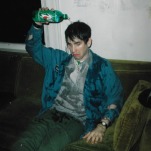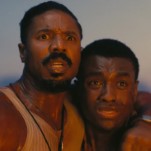Lake Street Dive: Searching for the Unexpected Chord

The art of the unexpected chord has fallen on hard times. That’s the strategy, prevalent in previous eras, where pop songwriters, arrangers and performers get a song going in one direction, setting up listeners to expect one chord, only to give them another. Unless the listeners are trained musicians, they might not even realize it’s a different chord, but they feel an emotional shift in the song, an enjoyable tingle of surprise.
In recent years, however, popular song has been more interested in other techniques: motor-mouth rhymes, stuttering microchip beats, street attitude and luscious studio tones. And those are all legitimate strategies that have led to some great records. But the unexpected chord provides a different kind of pleasure, one that’s been hard to find lately. That’s why Lake Street Dive is so important.
When this Boston-founded, Brooklyn-based quartet came to Baltimore’s Rams Head Live last October, the group unveiled four songs from its forthcoming album, Side Pony, which will be released Feb. 19. It’s a crucial album, not only because it marks the band’s transition from the small, respected indie label Signature Sounds to the Warner Bros.-affiliated Nonesuch Records, but also because it’s their one chance to capitalize on their buzz generated by their early TV appearances with Stephen Colbert, David Letterman and Ellen DeGeneres. It’s also an opportunity for the unexpected chord to return to pop radio.
In Baltimore, Lake Street Dive seemed up to the challenge. One of the new songs, “I Don’t Care About You,” opened with a buzzing, Beatlesque guitar arpeggio from Mike “McDuck” Olson, over the 4/4 push from drummer Michael Calabrese and upright bassist Bridget Kearney. But when Rachael Price began to sing, the guitar figure evaporated and the backing trio went into a relaxed blues swing.
One hardly noticed the clever gear shifting, because one was immediately caught up in Price’s rich alto. She used an earworm tune to inform a clueless ex-lover that “It’s too late; there ain’t no point in trying.” But the listener’s subconscious registered the transition as an enjoyable left turn, just as one’s inner ear appreciated the way the pounding hook of the major-key chorus was suddenly diverted into the descending, minor-key final line (“I’d say it to your face if I knew you could take it”) or the way the coda accelerated into double time to race through the chorus one more time.
“We are all students of that music: the Beatles, Paul Simon, David Bowie,” says Price. “And we met at jazz school, so we all grew up in an atmosphere that encouraged harmonic adventurousness. The combination of those two experiences made us from the get-go more interested in different chord progressions within a pop format. We try to invite the listener in by giving them something familiar to hang onto and then give them an exciting harmony that they weren’t expecting.”
You have to know what you’re doing to pull off such musical ambushes—and it’s no coincidence that the four members of Lake Street Dive met as students at the New England Conservatory of Music. But to make such surprises work in a pop context—as opposed to jazz or classical—they have to be hidden, embedded within the reliable pleasures of melodic hooks and dance rhythms. That’s a lost art, one that Lake Street Dive is bringing back to life.
In the band’s new Nonesuch bio, Kearney jokingly says, “We used to be stiffer, more analytical conservatory kids. Now we like to use our conservatory skills for good, not evil.” What she means is the band no longer uses their jazz chops to show off but rather to throw the listeners off-balance without them even knowing it. The band is always searching for the unexpected chord, not to prove how smart they are but to battle the mortal enemy of pop music: boredom.
“The temptation, especially when you’re young and acquiring new skills,” Kearney explains over the phone from Brooklyn, “is to overuse them, to show off all your complicated, technical abilities. But you have to be honest with yourself; you have to ask: ‘Does this really serve the song? Is it something that I would actually want to listen to?’ On the other hand, you don’t want to get into the habit of dumbing things down. You have to have to pick your spots to throw in an unexpected chord or a rhythm change, but it can be very effective when it works.”
“The chorale section at the end of ‘Godawful Things’ is a good example,” she says of another song on the new album. “The top of the song has an uptempo, melodic hook. But at the end of the song, when you’ve gotten to know what it’s all about, and in a nod to the inclusion of the word god in the title, it slows down and goes into a very churchy harmony that’s dense, awesome and new as it soars over Rachael’s vocal. You’ve already drawn people in and then there’s this moment that’s stunning at the end. But if that harmony had been there all along, it wouldn’t have been nearly as effective.”
“When you have a good groove,” Price adds, “you can do whatever you want harmonically; you can get away with anything. Stevie Wonder is a good example of that. Rhythm is the quickest way to cut into people, if you get their body moving, then I feel like I can say anything I want to, I can throw any harmony at you that I want to.”
-

-

-

-

-

-

-

-

-

-

-

-

-

-

-

-

-

-

-

-

-

-

-

-

-

-

-

-

-

-

-

-

-

-

-

-

-

-

-

-








































